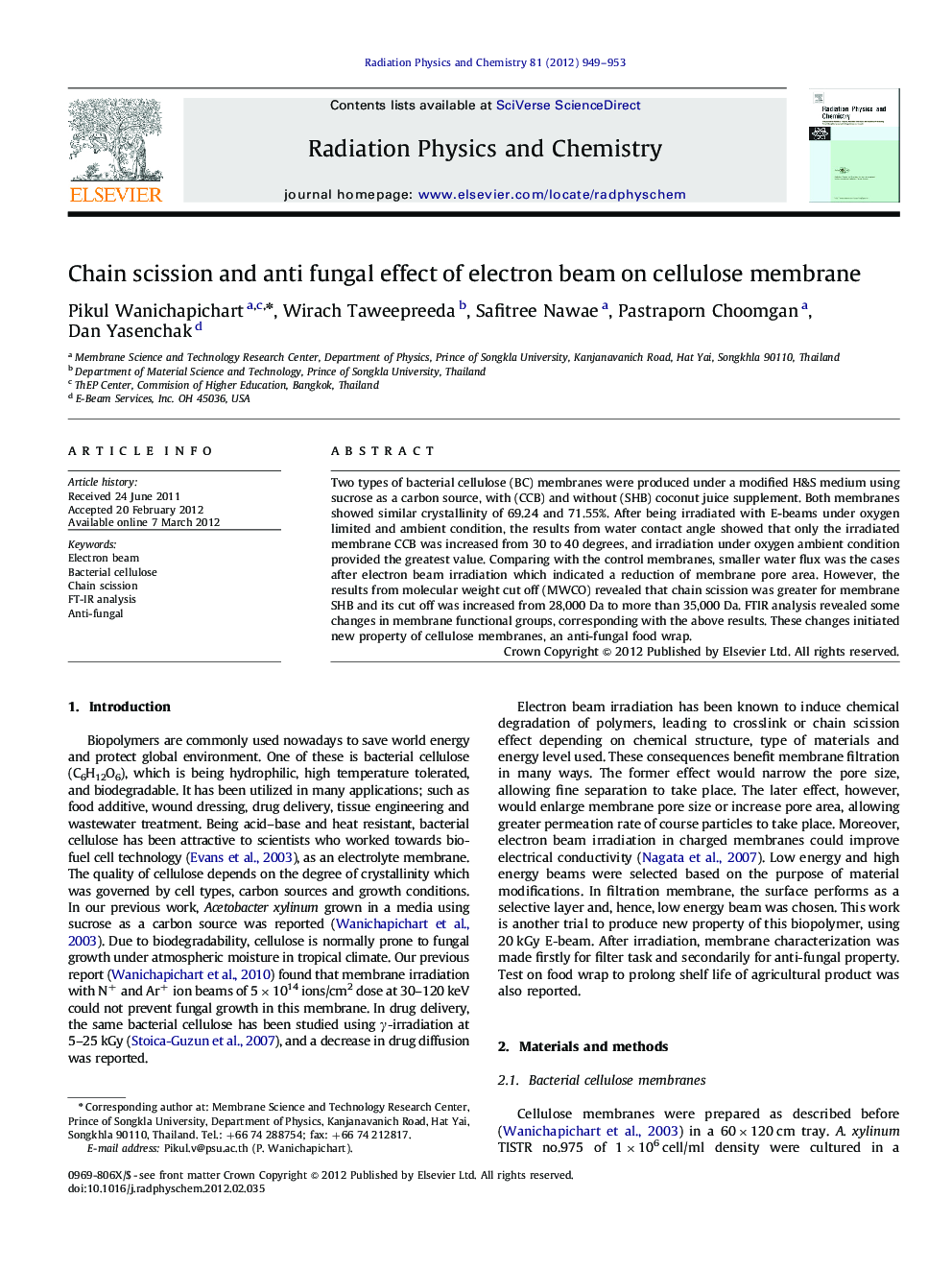| Article ID | Journal | Published Year | Pages | File Type |
|---|---|---|---|---|
| 1883933 | Radiation Physics and Chemistry | 2012 | 5 Pages |
Two types of bacterial cellulose (BC) membranes were produced under a modified H&S medium using sucrose as a carbon source, with (CCB) and without (SHB) coconut juice supplement. Both membranes showed similar crystallinity of 69.24 and 71.55%. After being irradiated with E-beams under oxygen limited and ambient condition, the results from water contact angle showed that only the irradiated membrane CCB was increased from 30 to 40 degrees, and irradiation under oxygen ambient condition provided the greatest value. Comparing with the control membranes, smaller water flux was the cases after electron beam irradiation which indicated a reduction of membrane pore area. However, the results from molecular weight cut off (MWCO) revealed that chain scission was greater for membrane SHB and its cut off was increased from 28,000 Da to more than 35,000 Da. FTIR analysis revealed some changes in membrane functional groups, corresponding with the above results. These changes initiated new property of cellulose membranes, an anti-fungal food wrap.
► Electron beam irradiation increased membrane hydrophobicity and molecular weight cut off. ► The irradiation caused chain scissoring and anti fungal property of cellulose membrane. ► FT-IR studies revealed changes in functional groups causing a decrease in membrane moisture. ► Anti fungal test of cellulose membrane showed the same shelf life as polyethylene sheet.
